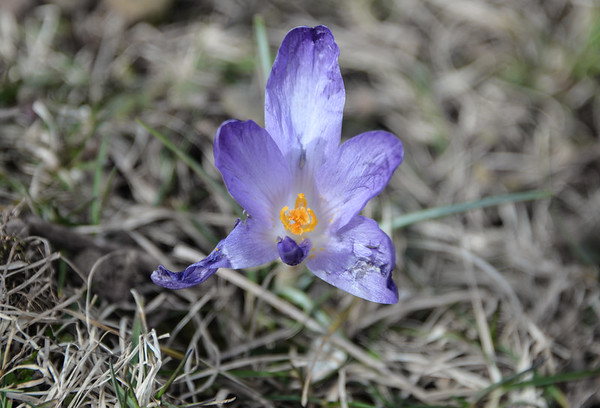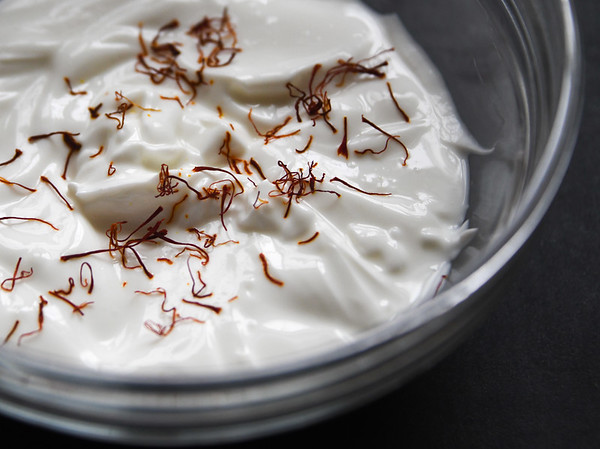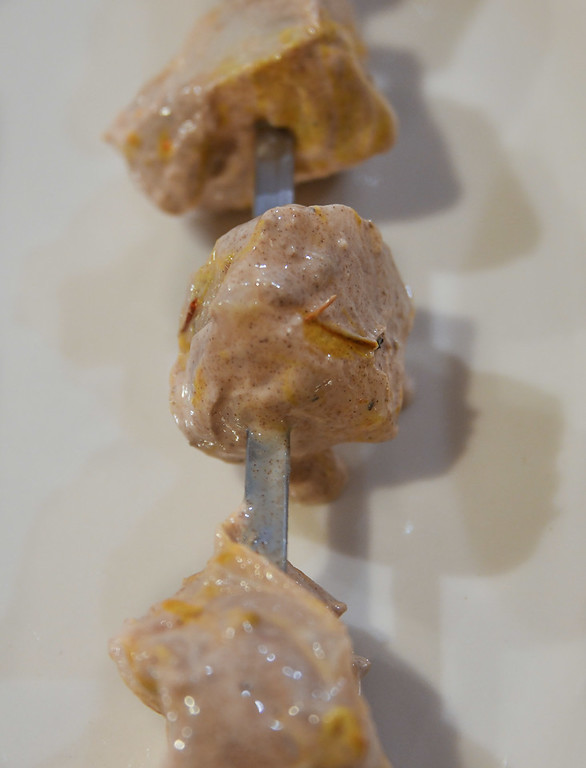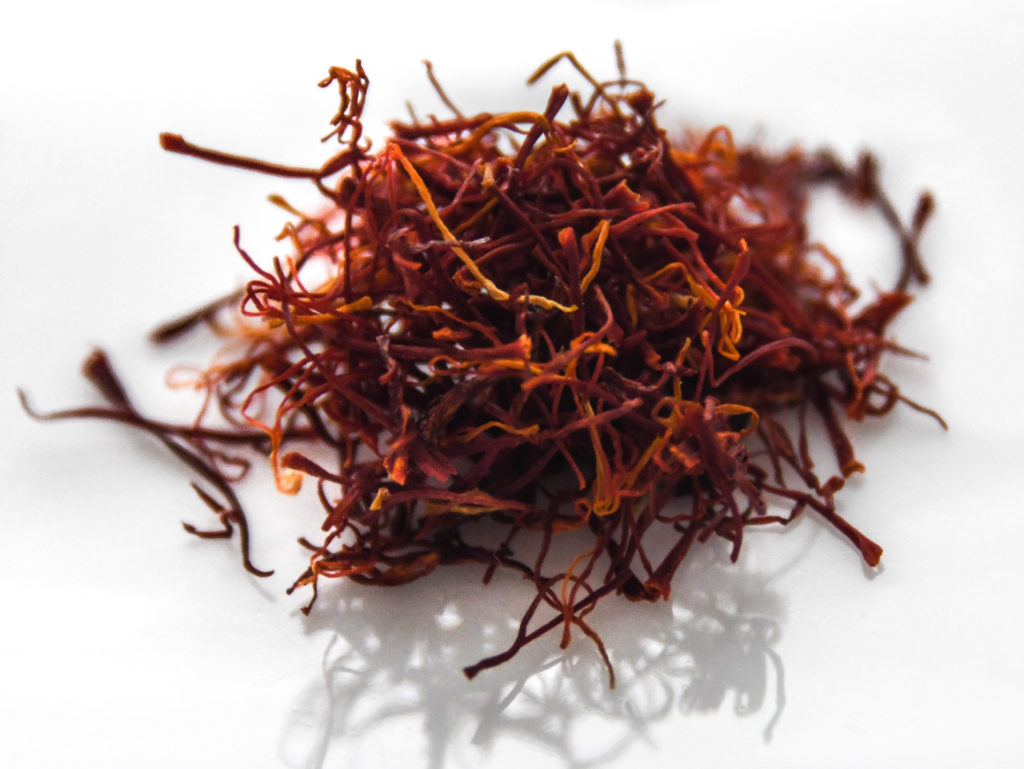After reading an article about the possible demise of Kashmiri saffron, I started to think of the dishes that I would miss if this earthy, orange-red spice disappeared forever. The Provencal fish stew bouillabaisse, Spanish paella, South Asian biryani, Milanese risotto and currant-studded saffron buns would be far less flavorful and satisfying without it. The same holds true for a recipe featured in my seafood cookbook “Fish Market,” saffron and cinnamon-scented monkfish kebabs.

A crocus but not a Crocus sativus, the fall blooming species from which saffron comes
What is saffron?
Saffron comes from the perennial crocus plant. Each plant produces small, purple flowers with three delicate, reddish strands at their centers. Known in the plant world as stigmas and styles, these colorful threads are saffron. Because they are fragile, these filaments must be picked by hand and then dried. Unfortunately, you can’t go outside and collect a few crocuses to flavor your cooking. The saffron-yielding species, Crocus sativus, blooms in the fall in such regions as East Asia, the Mediterranean and Iran. Plus, you would have to pluck roughly 14,000 flowers to produce one ounce of dried saffron. Hence why saffron gets the title of ‘most expensive spice in the world.’
Why do cooks love this spice?
For centuries this spice has been used to tint and flavor hundreds of dishes. Drop a few threads into hot tea, milk or yogurt and watch the liquid turn a luscious reddish-gold. Add several filaments to rice, sauces, puddings and soups and enjoy the tangy spiciness that it imparts. Because it is so bold in color, flavor and aroma, saffron is used sparingly in recipes. You only need a small amount to enhance the look and taste of a dish. Considering that two grams (less than one-tenth of an ounce) of Kashmiri saffron costs $25 while the same amount of Spanish saffron goes for $13, the “less is more” aspect comes as a relief.
For the following recipe you will need a smidgen of saffron threads. These can be purchased at spice shops, specialty markets and online from food purveyors such as Kalustyan’s. Splurge and buy “real” rather than powdered or ground saffron. Once opened, the powdered form will quickly lose its taste and scent. Plus, cheaper spices, including turmeric and safflower, may be substituted for it.
SAFFRON AND CINNAMON-SCENTED MONKFISH KEBABS
Taken from “Fish Market” (Running Press, 2013)
Serves 4
2/3 cup plain Greek yogurt
1 teaspoon ground cinnamon
1/4 teaspoon saffron threads
1/2 teaspoon ground cumin
1/2 teaspoon ground black pepper
1/2 teaspoon sea salt
Juice and grated zest of 1 small orange
1 1/2 pounds monkfish, cut into 1 1/2-inch cubes
In a small bowl mix together the yogurt, cinnamon, saffron, cumin, pepper, salt, juice, and zest.

Saffron on Greek yogurt
Place the monkfish cubes in a large bowl. Add the marinade and toss so that the fish is completely coated. Cover and refrigerate for 1 hour.
When you’re ready to cook the kebabs, preheat your grill on high. Remove the monkfish from the refrigerator and reserve the remaining marinade.
Using either metal skewers or bamboo skewers that have soaked in water, thread three to four pieces of fish onto each
skewer. Be sure to leave at least a 1/2-inch of space between each cube.

Monkfish skewered and ready to grill
Place the kebabs on the grill and cook for 7 to 9 minutes, basting with the remaining marinade after the first 3 to 4 minutes of cooking. You will need to turn over the kebabs several times as they cook. When finished, they will be firm and golden brown. Remove the kebabs from the grill and serve hot
